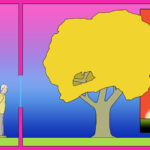Values
Please give yourself approximately 30 minutes for the values portion of this exercise.
“Values are your heart’s deepest desires for how you want to behave as a human being. Values are not about what you want to get or achieve; they are about how you want to behave or act on an ongoing basis; how you want to treat yourself, others, the world around you.”
– Russ Harris
Please print out the pages from the Personal Values Card Sort and use scissors to cut out the cards. (You can also purchase a Core Values Deck. For additional ideas, here is a list of values from Psychology Today.)
Use the three category cards in the Personal Values Card Sort, or make your own category cards, and place them in a horizontal row on a table: “Not Important to Me,” “Important to Me,” and “Very Important to Me.”
Try to be aware of both doing the exercise and observing yourself do it.
Sort all the cards into piles beneath each category.
Take the cards you have sorted into the “Very Important to Me” pile and sort them into two additional piles, one for values that you can practice on your own and one for values that need the presence of others to practice. For example, “Integrity” is a value you can practice on your own. “Service” is a value that requires the presence of others.
Look through the pile of values you can do on your own and pick your top 10. Then rank order them. Then pick your top 3.
Use the same process with the pile of values that require the presence of others to practice.

Please consider answers to these questions:
- What were your top 3 values that you can practice on your own?
- What were your top 3 values that need the presence of others to practice?
- What did you become aware of during the values exercise?
- What insights did you gain from doing the values exercise?
Priorities
Please give yourself approximately 30 minutes for the priorities portion of this exercise.
Part 1.
Please take out a piece of paper or a pad of paper.
Using your own definition of the term “priorities,” please take 5 minutes to simply list any and all priorities that come to you, in any order, in any form, in any area on the piece of paper. It’s okay if you cry and it’s okay if you don’t feel finished in 5 minutes. You can noodle over this later and add items as they occur to you. For now, just give this exploration 5 minutes.
Part 2.
In times of uncertainty, people wish for certainty. If you could have certain answers to 3 questions, and you think the answers to these questions would help you with your priorities, what would those 3 questions be? Please write these questions at the bottom of your list or on a fresh page.
Part 3.
Using your own definition of the term “crucial,” when you look at your page of priorities, what is the crucial priority?
Part 4.
Please print out this priorities worksheet or sketch a copy on a piece of paper.
The handout is Steven Covey’s “four quadrant” model with the addition of “crucial” by Mike Vardy. The columns, left to right, are “Urgent” and “Not Urgent.” The rows, top to bottom, are ” Important” and “Not Important.“ In the center is a box labeled “Crucial.“
Please write your crucial priority in the center box. Based on your assessment of their urgency and importance, please add your priorities into the quadrants around the crucial priority.
Part 5.
Rank order the priorities in each quadrant, putting a “1” by the most important in that quadrant, and”2″ by the next most important, and so on.
Please consider answers to these questions:
- In addition to your crucial priority, what were your top 3 priorities in rank order?
- What did you become aware of during the priorities exercise?
- In what ways did your “certainty questions” or your view of them change?
- What insights did you gain from doing the priorities exercise?
Values + Priorities
When I feel lost and scattered and uncertain about what’s going on, who I am, or what I am doing, I can revisit my values, which, above all, _______,_______, and _______.
My values remind me of my power.
Then I can become aware of my priorities. Among my priorities, I can decide what’s crucial, urgent, and important – and what’s not crucial and not urgent and not important.
My crucial priority is _______.
I can rank order my remaining priorities. After my crucial priority, the top 3 remaining priorities that are urgent and important to me, in rank order are: _______, _______, and _______.
Awareness of my priorities gives me direction.
The photo accompanying this post shows paleontologist Matheus Denezine’s system for keeping his values and priorities foremost.
I can keep my values and priorities before me – in whatever system I devise – to power and guide me through challenging moments, days, weeks, and times.
. . . . .
Awareness of priorities and values is a skill taught through Dialectical Behavior Therapy (DBT), a form of cognitive behavior therapy invented by Marsha Linehan, Ph.D.
Of possible further interest
Addressing Unmet Needs During Social Distancing
Adeptly Shifting Priorities in Uncertain Times
What Still Makes Sense and What No Longer Fits
Last updated 09/29/2023
This content is for informational purposes only and is not a substitute for medical or professional advice. Consult a qualified health care professional for personalized medical and professional advice.

